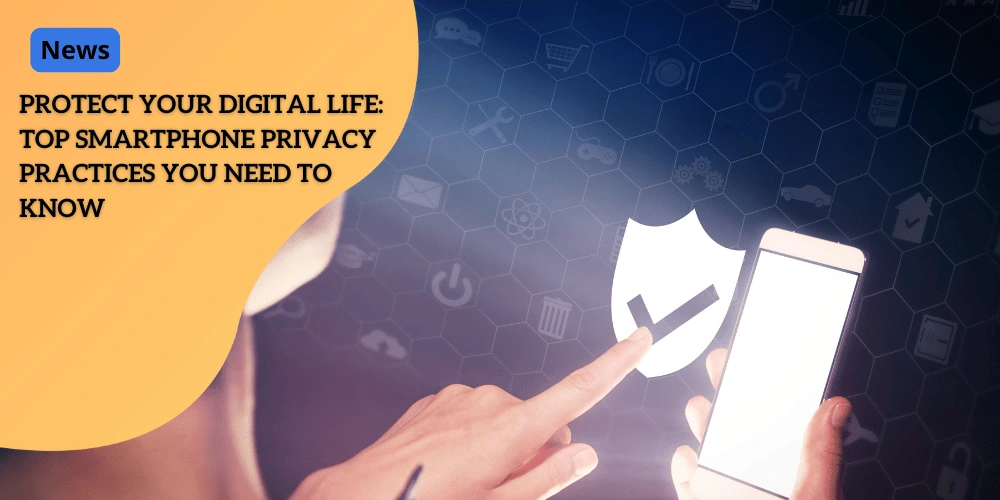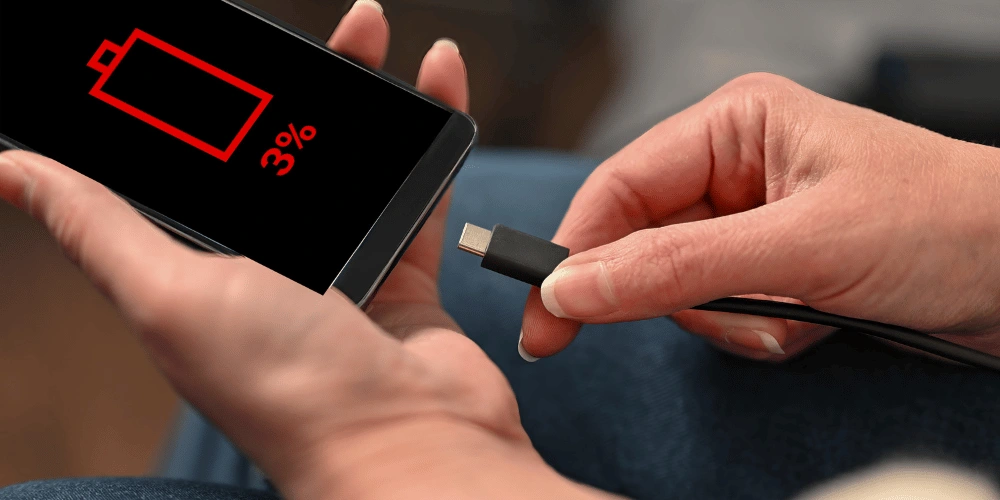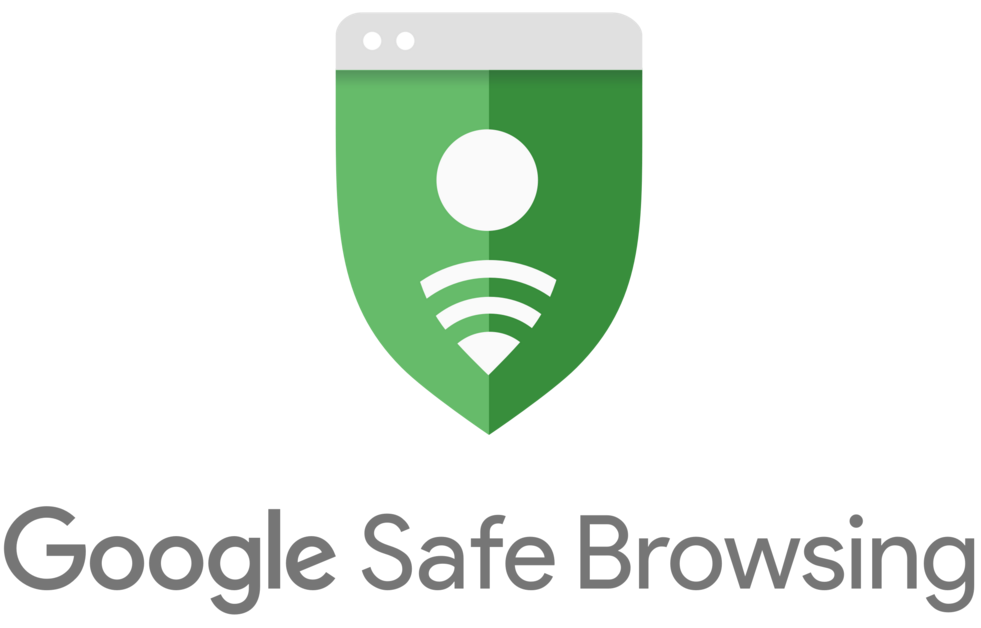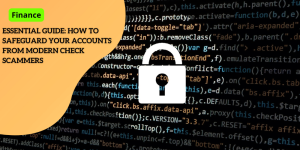Protect Your Digital Life: Top Smartphone Privacy Practices You Need to Know

Anúncios
Understanding the Growing Privacy Threats to Your Smartphone
Smartphones have become integral to our daily lives, but with their convenience comes significant privacy risks.
Understanding these modern security threats is crucial for protecting your personal data.
Anúncios
Overview of Modern Smartphone Security Risks and Vulnerabilities
Smartphones are increasingly targeted by cybercriminals due to the wealth of personal information they contain.
Modern vulnerabilities include zero-click exploits, where hackers can access your device without any interaction from you.
Anúncios
They might send malicious codes via text messages, emails, or apps that exploit device flaws, enabling unauthorized access.
Bluetooth hijacking is another threat.
When left enabled, Bluetooth can act as a gateway for hackers to intercept data or control your device.
Similarly, public USB ports, often found in airports and cafes, can be exploited for juice jacking, where malware is installed on your device to steal data.
Why the NSA’s Recommendations Matter for Everyday Users
To help combat these threats, the National Security Agency (NSA) has shared actionable advice.
They recommend practices such as regularly restarting your smartphone to thwart zero-click exploits and keeping Bluetooth disabled when not in use.
By following these guidelines, users can significantly reduce the risk of unauthorized access to their personal information.
The Balance Between Convenience and Security in Smartphone Usage
While robust security measures are essential, users must balance these with the convenience smartphones offer.
For instance, enabling Bluetooth for hands-free devices is convenient but should be done judiciously.
Similarly, using public Wi-Fi networks can be convenient but should be avoided for sensitive transactions unless protected by a Virtual Private Network (VPN).
Understanding these threats and applying practical security measures can help maintain the integrity of your digital life without sacrificing too much of the functionality and convenience that smartphones provide.
By prioritizing security and staying informed, users can better defend against evolving privacy risks.
| Privacy Practice | Recommendation | Benefits |
|---|---|---|
| Weekly Device Restart | Restart your device weekly | Prevents zero-click exploits and resets vulnerabilities |
| Disable Bluetooth | Turn off Bluetooth when not in use | Reduces risk of data theft and malware installation |
| Use Airplane Mode | Activate when in unfamiliar or high-risk areas | Prevents remote access and hacking attempts |
| Avoid Public USB Ports | Do not use public USB charging stations | Protects against juice jacking and malware |
| Use a VPN | Enable VPN when using public Wi-Fi | Encrypts your internet connection and protects data |
Essential Device Management Practices
Weekly Device Restart Protocol
Restarting your smartphone weekly is a straightforward but significant step in maintaining security.
The NSA recommends this practice because it disrupts potential zero-click exploits, which are attacks that can infiltrate your device without any user interaction.
By turning off your phone, waiting 10 seconds, then restarting it, you reset your system and remove any temporary vulnerabilities installed by malicious codes.
Keep this habit consistent to ensure a higher level of security and prevent malicious actors from gaining hidden access through unnoticed software flaws.
Proper Management of Bluetooth Connectivity
Bluetooth technology is a convenient tool for wirelessly connecting devices, but it also presents specific security risks.
Hackers can exploit Bluetooth connections to access your data or install malware, and because Bluetooth networks operate over short ranges, this threat is amplified in public spaces.
Therefore, it is essential to turn off Bluetooth when not in use.
On an iPhone, go to Settings > Bluetooth and switch it off.
On Android devices, the path is Settings > Connected Devices > Connection Preferences > Bluetooth. Remember, managing Bluetooth settings carefully not only protects your data but also improves battery life.
Strategic Use of Airplane Mode
Airplane mode is another simple yet effective way to enhance your security.
This setting disables all wireless connectivity, including Bluetooth, Wi-Fi, and cellular networks.
When enabled, airplane mode ensures that no external signals can interact with your device, drastically reducing the risk of remote hacking attempts.
Use this function strategically—such as when you are traveling or in unfamiliar locations—to provide an additional layer of security.
However, be aware that activating airplane mode will also stop you from receiving calls or texts, so use it wisely based on your need for connectivity versus privacy at a given time.
By following these essential device management practices, you can significantly enhance your smartphone security and privacy.
In our next segment, we’ll dive into secure charging practices to further protect against potential threats while keeping your device powered up.
Safe Charging and Connection Practices
Risks Associated with Public USB Charging Ports and Juice Jacking
Using public USB charging ports can expose you to a cyber threat known as juice jacking.
When you plug your phone into a compromised USB port, hackers can potentially install malware on your device or steal your personal data.
This risk arises because USB ports transmit both power and data.
In public places like airports or cafes, the allure of a free charging spot can make you a target.
Even though occurrences of juice jacking are relatively rare, the threat exists and should not be underestimated.
To mitigate this risk, it is crucial to avoid public USB ports unless absolutely necessary.
Instead, consider having alternatives ready, such as using a genuine charger directly from a power outlet.
 Be careful where you charge your smartphone
Be careful where you charge your smartphone
Safe Alternatives for Charging in Public Spaces
Opt for safe charging alternatives to minimize exposure to malicious USB ports. Here are a few recommended practices:
- 🛡️ Carry a USB charging hub: Use a certified personal USB hub which only transmits power, not data.
- 🛡️ Use portable chargers: Power banks can be lifesavers in public spaces, providing a safe and portable charging option.
- 🛡️ Opt for wireless charging pads: Many public kiosks offer wireless charging pads. These pads don’t exchange data with your phone, making them a safer option.
Following these practices can significantly reduce the risks associated with public charging stations.
Best Practices for Wireless Charging and Data Protection
Wireless charging offers a safer method as it doesn’t transmit data along with power. However, ensuring the security of your device while using wireless charging requires attention to certain details:
- 🛡️ Be careful where you charge your smartphoneUse only certified wireless chargers: Opt for reliable and well-reviewed wireless chargers to avoid any potential security loopholes.
- 🛡️ Enable security features: Even when using wireless charging, always keep your device locked. Enabling airplane mode while charging can add an extra layer of security.
Employing these practices helps maintain data integrity and guards against potential threats while ensuring your device stays powered.
After considering charging best practices, it’s essential to remain vigilant about the networks you connect to.
Exploring network security essentials can further reinforce your smartphone’s defenses.
Network Security Essentials
Dangers of Public Wi-Fi Networks and Common Hacking Techniques
While the convenience of public Wi-Fi networks is tempting, they pose significant risks.
Many public networks, like those in coffee shops, airports, and hotels, are open and accessible to everyone, making them prime targets for cybercriminals.
The lack of encryption on these networks allows hackers to intercept data being transmitted, a process known as “man-in-the-middle” attacks.
Sensitive information such as passwords, credit card details, and personal messages can be easily intercepted if transmitted over unsecured Wi-Fi.
Additionally, hackers often set up “evil twin” networks—fake Wi-Fi networks with legitimate-sounding names.
Unsuspecting users connect to these malicious networks, thinking they are legitimate, only to have their data siphoned by the attacker.
Identifying Legitimate vs. Suspicious Network Connections
When using public Wi-Fi, it’s crucial to identify legitimate networks before connecting. Here are some steps to mitigate risks:
- 🛡️ Verify the network name: Confirm the correct Wi-Fi network name with establishment staff. Hackers often use names like “Coffee Shop Free Wi-Fi” to trick users.
- 🛡️ Disable automatic connections: Ensure your device doesn’t automatically connect to available networks, which could include malicious ones.
- 🛡️ Pay attention to connection prompts: If a network prompts multiple security warnings or requests unusual permissions, avoid connecting.
Using VPNs and Other Protective Measures for Public Internet Access
A Virtual Private Network (VPN) is a tool that encrypts your internet connection, creating a secure tunnel between your device and the internet.
This added layer of security is essential when accessing public Wi-Fi, as it masks your data from potential eavesdroppers on the network.
To maximize your network security, consider the following steps:
- 🛡️ Use a reputable VPN service: Look for VPNs with strong encryption standards and a no-logs policy to ensure your data remains private.
- 🛡️ Keep your software updated: Regularly update your device and apps to protect against known vulnerabilities.
- 🛡️ Enable two-factor authentication (2FA): Enable 2FA on services that support it. This step adds an extra layer of security to your accounts, even if a hacker obtains your login credentials.
With these practices, you can greatly enhance your network security, reducing the risks associated with public Wi-Fi usage.
Keep these tips in mind to ensure your personal data stays safe wherever you connect.
Hardware Protection Strategies
Protecting Device Cameras and Microphones
Maintaining the security of your smartphone’s hardware is crucial in safeguarding your privacy.
Unauthorized access to your device’s cameras and microphones is a genuine threat.
Hackers can exploit these vulnerabilities through malware or compromised apps. To mitigate this risk, physical shields can be highly effective:
- 🛡️ Use camera covers or sliders to block your camera when not in use.
- 🛡️ Opt for cases that include built-in covers for both the camera and the microphone.
- 🛡️ Consider plugging in a physical microphone blocker or old headphones, which can prevent unauthorized access to your microphone.
These simple tools act as the ultimate barrier against hackers trying to hijack your device’s hardware.
Recognizing Indicators of Device Compromise
Being vigilant about the signs of potential device compromise is essential. Here are some red flags to watch out for:
- 🛡️ Unusual battery drain or overheating
- 🛡️ Unexpected pop-ups or apps that you didn’t install
- 🛡️ Strange background noises during calls, indicating potential microphone access
- 🛡️ Persistent orange or green indicator dots on your screen, which signify active microphone and camera usage respectively
Regularly check your device settings and app permissions to ensure no unauthorized changes have been made.
Physical Security Measures and Protective Accessories
Implementing physical security measures can further protect your device’s integrity:
- Use screen protectors: Effective screen protectors not only guard against scratches but can also add a layer of privacy by limiting visibility from angles.
- Invest in sturdy phone cases: Cases that cover all ports and secure tightly can prevent direct tampering.
- Secure with locks: Physical locks or straps can deter theft and unauthorized physical access.
- Employ tamper-evident seals: These seals can alert you to any unauthorized attempts to access your device.
By incorporating these physical measures, you enhance your overall smartphone security and ensure your privacy remains intact.
Your next layer of digital protection involves app permissions and privacy settings.
Managing App Permissions and Privacy Settings
Regular Review and Adjustment of App Permissions
Managing your smartphone’s app permissions is essential to safeguard your personal information.
Regularly review the permissions granted to each app under your device’s settings.
This prevents apps from accessing data or features (like your camera and microphone) unnecessarily.
Here’s how you can access and adjust app permissions:
- 🛡️ Para iPhone: Vá para Ajustes > Privacidade e Segurança e revise as permissões de cada aplicativo.
- 🛡️ Para Google Pixel: Abra Ajustes > Segurança e Privacidade > Privacidade > Gerenciador de Permissões.
- 🛡️ Para Samsung Galaxy: Acesse Ajustes > Segurança e Privacidade > Gerenciador de Permissões.
This routine check helps identify apps that might not need certain permissions and potentially mitigate unauthorized data access.
Understanding Privacy Indicators and Device Notifications
Modern smartphones have built-in privacy indicators and notifications to alert you when your device’s features are being used.
For instance, a small orange dot at the top of your screen signals that your microphone is active, while a green dot indicates camera usage.
These indicators are not only useful but crucial for knowing when an app might be exploiting granted permissions.
To stay proactive, familiarize yourself with these privacy indicators:
- 🛡️ Microphone Indicator: Look for an orange dot when your microphone is in use or was recently accessed.
- 🛡️ Camera Indicator: A green dot appears for similar alerts regarding your camera.
By keeping an eye on these indicators, you can quickly respond to any suspicious activity.
Best Practices for Maintaining Ongoing Privacy Protection
Maintaining smartphone privacy requires ongoing vigilance.
Here are some best practices to enhance your mobile security:
- Limit App Permissions: Only grant apps the permissions they need to function. If an app requests unnecessary access, consider it a red flag.
- Update Regularly: Keep your apps and operating system up to date to protect against new vulnerabilities.
- Use Built-in Security Features: Utilize features such as Face ID or fingerprint scanning for a more secure authentication method.
- Manual App Cleaning: Periodically delete unused apps to reduce potential privacy risks.
- Stay Informed: Keep up with the latest security patches and privacy features offered by your device manufacturer.
Taking these steps will significantly enhance your device’s security in day-to-day usage, ensuring that your personal information remains protected.
By implementing these privacy practices, you are making your smartphone more secure and less susceptible to breaches.
With your app permissions and privacy settings under control, your next focus should be understanding the importance of charging habits and network security.







